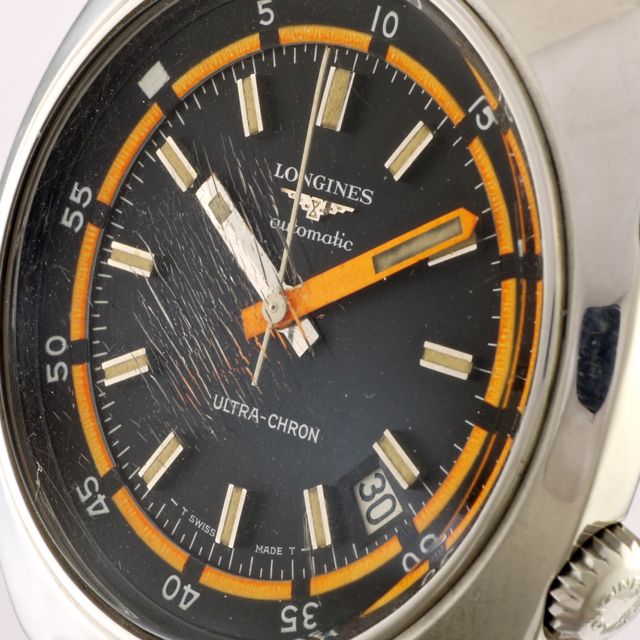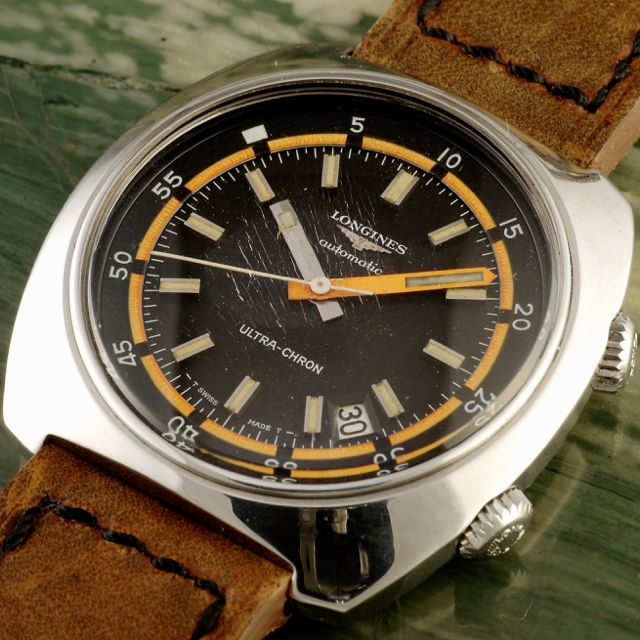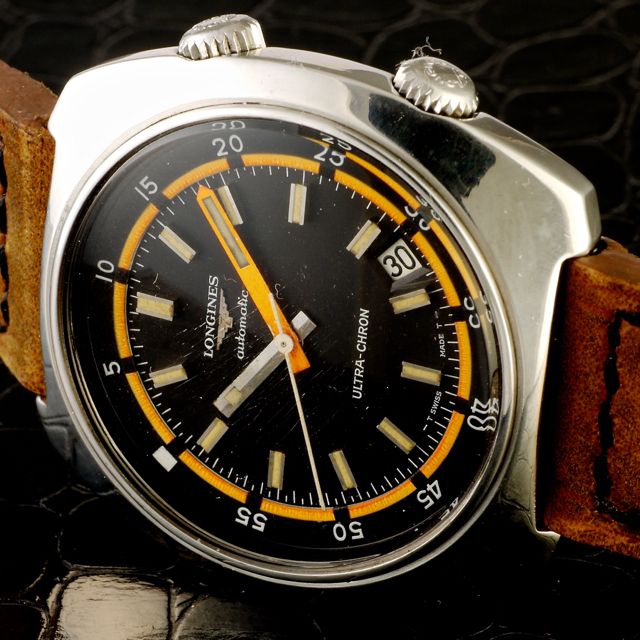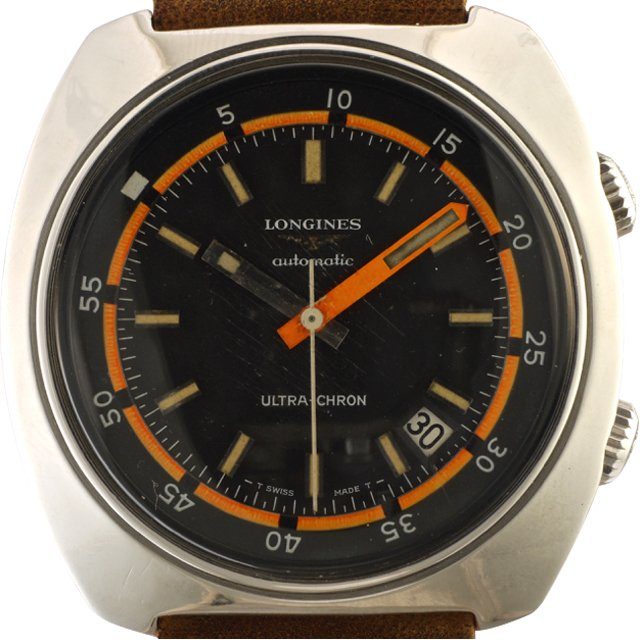



Longines Ultra-Chron Diver
Neil Armstrong and Buzz Aldrin become the first humans to walk on the moon1969 Longines Ultra-Chron ref. 8221-3, Super Compressor 41 x 43.2mm. case, inner rotating bezel.
In the 1960s, most movements ran at 2.5 or 3 Hz; the Hi-Beat movement pushed this up to 5Hz. The greater speed meant better stability and more accuracy, most Hi-Beat watches were within chronometer standards by default.
This accuracy came at a price. The movements consumed more power meaning that power reserve was lower, mainsprings had to be stronger and more wear and stress was put on the movement. Even the oiling was a problem as the speed of rotation could throw the oil off the parts.
The first Hi-Beat watch was produced by Girard-Perregaux in 1965 but the power reserve was too low to be practical and so the Longines Ultra-Chron was the first successful movement of this type. They solved the oiling issue by using a dry coating of molybdenum bi-sulfide to lubricate the escapement.
At the time, Longines marketed the Ultra-Chron as the most accurate watch in the world guaranteeing a precision within 2 seconds per day.
The Super Compressor watch case was patented in 1956 and manufactured by Ervin Piquerez SA (EPSA) for almost two decades. Most of the Super Compressors can be identified by their twin crowns and internal rotating timing ring.
The name actually referred to the cases sealing technology, which made use of a spring-loaded case-back that sealed tighter as external water pressure increased. EPSA’s logo was a stylized diving helmet and could be found either on the outside or inside of the case-back. The crowns are typically cross-hatched, oversized and thick, making it easier to operate them under water.
Over 100 different brands used one of the many variations of SC cases. Some notable brands used the dual crown design, including: Jaeger leCoultre, Longines, Universal Geneve, IWC and Blancpain.
Longines was founded in 1832, its winged hourglass logo is the oldest registered trademark for a watchmaker.
Longines provided timers used at the first modern Olympics in 1896.
In 1899, a Longines watch went to the North Pole with the Arctic explorer Luigi Amedeo of Savoy.
Charles Lindbergh, after his transatlantic flight, designed a pilot watch to help with air navigation. Built to his specifications, the Longines hour angle was introduced in 1931 and it is still produced today.
The company began to produce military issue watches for the second World War, most for the European forces.
Today Longines is owned by the Swatch Group.
